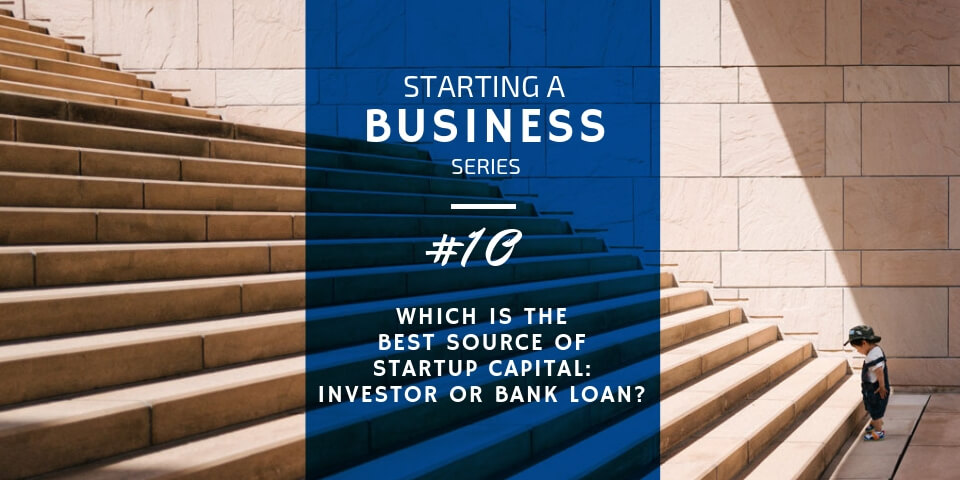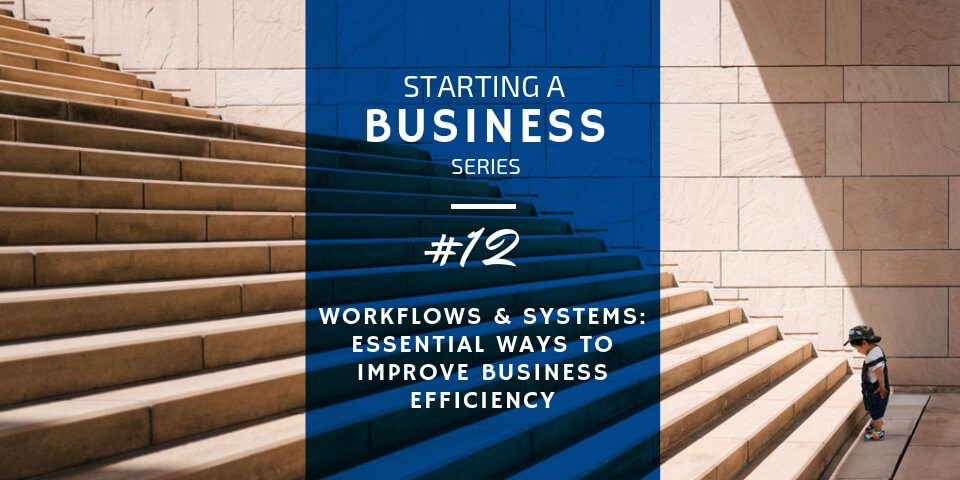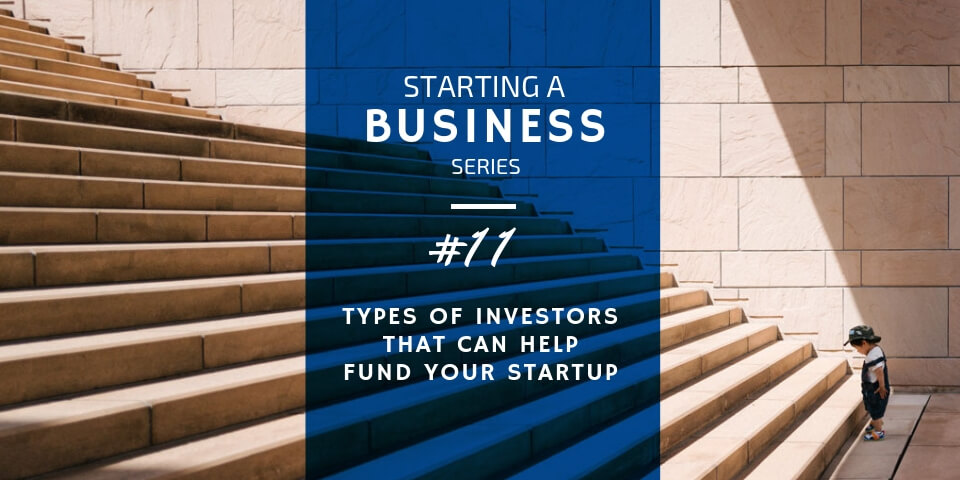
Investor vs Bank Loan… Which is The Best Source of Startup Capital?
September 17, 2018
Workflows & Systems: Essential Ways to Improve Business Efficiency
October 1, 201812 Types of Investors That Can Help with Funding Your Startup

When you start a business, you can see the good your product or service will provide a marketplace. But to be able to make a difference, the business must get off the ground first. However, you’ll need money to make that happen. The good news is, you can start many businesses with very little capital. On the other hand, I’ve worked with many clients who needed millions of dollars as a startup. They needed money for equipment, employees, marketing, retail space, and more. So if you’re like them and need money, where do you get it? Knowing that banks are hesitant to loan money to new businesses, you’ll have to get creative. Therefore, in today’s article, I’m going to discuss twelve types of investors that you might be able to go to when funding a startup.
Follow along by podcast:
Podcast Time Index For “Funding – How to Find Money When Starting a Business”
- 00:30 – How to find money when starting a Business
- 03:28 – How can we raise money to start a Business?
- 04:07 – Crowd-Funding
- 04:43 – Angel Investors
- 06:16 – Venture Capitalists
- 07:53 – Small Business Administration
- 09:29 – Micro Loans
- 10:17 – Personal Financing
- 11:34 – Purchase Order Financing
- 14:23 – Vendor Financing
- 16:17 – Friends & Family Loans
- 18:18 – Contests
- 20:26 – Product Pre-Sales
- 21:29 – Alternative lending sources
- 22:33 – Sign Off
Ways of Funding a Startup
#1 – Crowd Funding Platforms
First, you can try a crowdfunding platform like Krowdster, Kickstarter, GoFundMe, or RocketHub to raise money from friends, family members, customers, and individual investors for your startup. As Fundable.com explains, “This approach taps into the collective efforts of a large pool of individuals—primarily online via social media and crowdfunding platforms—and leverages their networks for greater reach and exposure.” In other words, you can establish a portal on these types of websites that allow investors or the general population to see your idea and invest in it if they think it’s good or seems helpful.
#2 – Angel Investors
Another way to raise money is through Angel Investors. This type of investor is trying to find something that’s going to “hit it big” like the next Google or Yahoo. Basically, Angel Investors are willing to invest in startups and will provide capital either once or over a period of time to help a company get through the early, difficult stages of launching. Oftentimes, Angel Investors will provide more favorable terms than other lenders because they’re not looking for the viability of a business, they’re looking at its potential.
Many times, Angel Investors must register with the U.S. Securities and Exchange Commission (the SEC) if they are true Angel Investors. However, Angel Investors can also be family members or friends who want to invest in your big idea. Sometimes, you’ll have to give Angel Investors a share of your company in return for their investment, but many times, they’re not interested in that. They’re just looking to make a nice return on their investment, not actually investing in the company itself or owning equity in the company.
#3 – Venture Capitalists
Similar to Angel Investors, Venture Capitalists are another type of investor that might be an option for you to help fund your startup. However, rather than investing in big ideas, they want to invest in young or up-and-coming businesses that already show potential. Typically, Venture Capitalists also want a share of equity in the company, royalties from sales the company makes, or a right to patents a company possesses in exchange for their investment. Think television’s Shark Tank here.
#4 – The Small Business Association
The Small Business Association, or the SBA, is the U.S. government’s vested interest in helping small businesses grow and succeed. While it doesn’t offer loans, per se, the SBA often underwrites loans or guarantees startup business loans through one of your locally approved banks or lending institutions. Additionally, the SBA has grants available for some startup businesses, usually not-for-profit organizations or educational institutions.
#5 – Micro Loans
A fifth way you can raise capital for a startup is through microloans, which are small loans between $500 and $100,000 offered by financial institutions. These loans may come from Crowdfunding sites or through SBA guarantees, but typically, these loans are provided to not-for-profit organizations or to individuals who typically don’t qualify for traditional bank loans.
#6 – Personal Financing
As far as getting capital for your business, #6 is probably my favorite. I believe that the more skin you have in the game, the more driven you’ll be to see it succeed. That’s just the way I am. Now, there’s nothing wrong with using other people’s money to make money. I like that idea, but I think you should look at funding a business using your own capital, too.
To finance your startup business personally, you could take out a second mortgage or a Home Equity Line of Credit on your house. You can borrow money from whole life or universal life insurance policies if you happen to have those. You could even borrow qualified monies from retirement accounts if they’re properly designed. Just remember that there are pros and cons to each of those different scenarios. You’ll want to work with your CERTIFIED FINANCIAL PLANNER™ and your CPA to minimize tax liabilities and ramifications you might incur through those personal financing scenarios.
RELATED CONTENT: 8 Ways to Stabilize Your Personal Finances Before Starting a Business
#7 – Purchase Order Financing
Purchase Order Financing is a way for you to secure funding in supply-and-demand type scenarios. Let’s say that you operate a retail store, and you receive a purchase order from a customer for 5,000 widgets. To receive those widgets, you must pay your vendor up front. Yet, if you’re like most business owners I know, you don’t have that much disposable cash in the bank. To afford the supplies to meet the customer’s demand, you need an advance.
With this type of financing, you can take the official Purchase Order you’ve received from your customer to a lending institution and request an advance to pay for the supplies you need to fulfill the order. Many times, if lenders approve your request for financing, they’ll charge certain fees for the advance. They might also expect the money back within a certain amount of time. Additionally, they may not approve you for 100% financing to cover the entire cost of the supplies.
#8 – Vendor Financing
Vendor financing is where the vendor (somebody who’s supplying you with goods, services, or equipment) will finance the products, services, or equipment for you. This type of financing is akin to purchase order financing. In this case, the vendor is advancing the products to you so that you can fulfill customer orders without paying cash upfront.
For products or services, vendors will typically offer no payments for 30 days or no interest for 30 days without fees or penalties. Sometimes, you can negotiate longer terms like 45 days, 60 days, or 90 days from the time you receive the product. If you’re trying to purchase an expensive piece of equipment like a dental chair or a lathe, the vendors may even offer one-year same-as-cash loans.
#9 – Product Pre-Sales
Product pre-selling is similar to Purchase Order Financing and Vendor Financing, but it’s not exactly the same. Think of it in reverse. You have customers who want to buy 100 widgets, so you make them pay for the products upfront. Then, you use their money to purchase the supplies they need. You retain the profit. The intimidating part of pre-selling, though, is that a customer could demand money back. If you’ve already spent that money, you could be in a predicament.
#10 – Family and Friends
Obviously, you can go to family and friends to help fund your startup. I’m not personally a fan of this type of investor, but it’s an option. I know plenty of people who have borrowed from loved ones. I’ve seen families who have been successful in this matter. Yet, I’ve also seen families destroyed over borrowing money. I tend to agree with the Bible’s take on lending – “the borrower is a slave to the lender.” And I don’t want to put my relationships with friends or family members at risk by borrowing money from them. I don’t want them saying that I didn’t pay them back in a timely manner or begrudging the money they’ve loaned me. Also, I don’t want to take money that they may need sooner than I can pay it back.
#11 – Contests
If you keep your ears to the ground, you can find contests to enter that offer cash prizes to the winners. Oftentimes, you’ll pay an entry fee and have to meet certain eligibility requirements. However, if you win the contest, you could gain the seed money you need to get your business started. These events will look different according to each industry, but they could help you get your feet off the ground.
#12 – Alternative Lending Sources
Finally, I call this last financing option your alternative lending sources. Alternative lenders are small lenders not associated with banks and government agencies who lend on a case-by-case scenario. Probably the most popular ones that I’m aware of are companies like PayPal, Kabbage, or Prosper. Typically, they’re going to charge higher interest rates than banks or agencies, but they are an option.
Are There Other Ways to Raise Money when Funding a Startup?
Now, obviously, these are NOT the only ways to raise capital to start a business. Get creative. You don’t have to have a lot of money, and you don’t have to run out to the bank and borrow everything. There are a number of ways to fund your startup. So talk to your advisors – your CFP®, your CPA, and your attorney. See if they know of additional capital resources, and don’t forget to check with them before you make any big financial decisions!
In our next article, we will discuss your workflows and systems that increase your business’s efficiency (and profit).
If you have questions about any of the different types of investors, please contact us! Our team would love to answer any of your questions, and if you’re in the market for a qualified financial advisor, we will assess your needs and determine if you’re a good fit for our services.

Here at Financially Simple™, we want to help you make informed financial decisions for your small business with confidence. In doing so, we might recommend products and services that offer us compensation when you use them. This compensation is used to help offset the cost of creating the content we give to you for free. We will, however, never suggest products/services solely for the compensation received. As stated before, our goal is to make understanding money for you the business owner, your family, and anyone visiting this website—financially simple.



